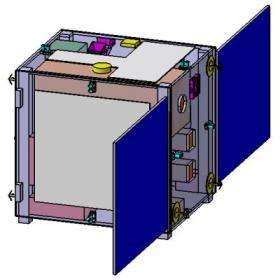Proba-3: ESA’s first step towards formation flying

Proba-3 is the third in ESA’s series of missions for validating developments in space systems while carrying an ‘added value’ user payload which can directly benefit from the innovations under test. Proba-3 will demonstrate the technologies required for formation flying of multiple spacecraft. An instrument to observe the solar corona is being used for the ongoing design phase.
During the ESA Council at Ministerial Level held in December 2005, new activities were proposed to cover the design, development and in-flight operation of a set of small satellites for the full-scale testing and validation of formation flying missions.
Formation flying technologies will make new types of missions possible and provide a leap in the performance of future science, Earth observation and application missions.
Mastering formation flying missions requires the development of specific technologies well beyond the present state-of-the-art in fields such as metrology and spacecraft guidance, navigation, and control.
Proba-3, currently in its preparatory study phase, will comprise two independent, three-axis stabilised spacecraft flying close to one another with the ability to accurately control the attitude and separation of the two craft.
Utilising either cold-gas or electrical thrusters for agile manoeuvring, and both radio-frequency and optical (laser-based) metrology techniques for accurate position measurement and control, the combined system is expected to achieve a relative positioning accuracy of the order of 100 microns over a separation range of 25 to 250 metres.
Other Proba spacecraft
Proba spacecraft are part of ESA’s technology demonstration initiatives, funded through the General Support Technology Programme (GSTP). They are series of small, low-cost satellites that are being used to validate new spacecraft technologies, research techniques and development approaches, while also carrying scientific payloads.
The first satellite in the series, Proba-1, was launched in October 2001. Its primary payload is an imaging spectrometer for Earth observation. This instrument exploits the spacecraft’s autonomy and high-performance attitude control and pointing capabilities. Originally designed for a two-year mission, Proba-1 is now in its fifth year of operations.
Proba-2 is currently under development and due for launch in September 2007. Seventeen new technological developments will be flown on Proba-2. Eight items form part of the spacecraft infrastructure, while the other nine are being carried as passenger technologies to gain flight heritage and experience before committing them to the infrastructure of other missions. Proba-2 will carry four experiments: two for solar observations and two for space weather measurements.
Source: ESA





















